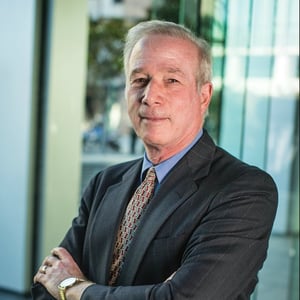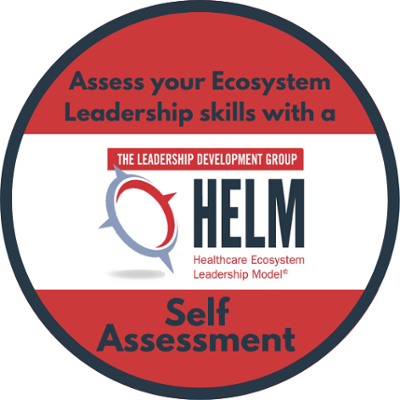The end of Haven Healthcare
When the formation of Haven Healthcare was announced in 2018, Jamie Dimon, Chairman and CEO of JP Morgan, one of the sponsoring organizations (Amazon and Berkshire Hathaway were the other two) said, "The three of our companies have extraordinary resources, and our goal is to create solutions that benefit our U.S. employees, their families and, potentially, all Americans."
A recent visit to the website for Haven Healthcare was greeted with this announcement:
In the past three years, Haven explored a wide range of healthcare solutions, as well as piloted new ways to make primary care easier to access, insurance benefits simpler to understand and easier to use, and prescription drugs more affordable. Moving forward, Amazon, Berkshire Hathaway, and JPMorgan Chase & Co. will leverage these insights and continue to collaborate informally to design programs tailored to address the specific needs of their own employee populations.
Haven will end its independent operations at the end of February 2021.
And, as was reported in the AHA Center for Innovation Market Scan on 1/12/2021,
“For all its efforts to disrupt health care by increasing primary care access, simplifying insurance benefits and reducing costs, Amazon and its partners JPMorgan Chase and Berkshire Hathaway ultimately failed at their greatest ambition: to develop models that they and other employers could use.”
While the main participants have not directly shared much about the end of Haven, many health industry and business experts have offered opinions on what went wrong with this bold effort to transform health and drive value. Most of these articles focus responsibility on the ambitions of each of these three powerful companies, the decisions they made and their oversight of Haven. Since companies do not actually make decisions or take any action, I will focus on the people who do set priorities, allocate resources, approve and implement plans, and evaluate progress…..the leaders.
The leaders, what went wrong?
In the book I co-authored with Tracy Duberman, From Competition to Collaboration, we write that the transformation of healthcare requires strong partnerships across multiple industry sectors, an ecosystem approach. The diversity of stakeholders involved in this dynamic process are its ultimate strength and it also creates significant challenges. Collaborations bring together organizations with different business models and unique organizational cultures. Political issues need to be continually negotiated by people with varying backgrounds, experience and expertise and interpersonal styles and capabilities. This assortment of ingredients makes agreeing on purpose, aligning on strategy, and sustaining performance difficult. Ultimately, leaders are measured and rewarded to optimize the results of their business model. They are understandably reluctant to make decisions that might compromise that performance. Organizations have unique ways of doing things that sustain their success and leaders have been developed to behave in ways that support their own organization’s culture. Yet, collaboration, often with disparate organizations, is what is required to create innovative, ecosystem solutions for the significant problems facing health care.
Tracy and I developed the Health Ecosystem Leadership Model (HELM) to describe the mindset and skillset that is needed for leaders to meet these challenges. HELM leaders need to act and behave in ways that support:
- Envisioning possible futures across the health ecosystem
- Aligning diverse stakeholders around a common purpose and strategy
- Overcoming obstacles that are inevitable in collaborative efforts
- Acting under uncertainty, learning from the results of those actions, and adapting and moving forward
HELM defines specific leadership actions that support collaborative solutions. These leadership behaviors are easily understood and have been validated by HELM leaders. Yet, many leaders also recognize that knowing is not doing, intending is not acting. The derailers of leadership actions and behavior are powerful and include:
- Short-term results orientation
- Low levels of flexibility
- Lack of respect for divergent interests
- Conflict and risk avoidance
- Self-promotion
- Cognitive bias
The three companies that formed Haven believed that they could support their businesses by focusing their significant resources to reduce health care costs, improve access to care, and simplify insurance. The leaders had confidence that they, and the other smart people they would bring on, could develop the required approaches. While not clear on the required solutions, their ideas on the underlying causes of the problems drove their actions and decisions. However, we know from studies in individual and organizational psychology, that cognitive biases, faulty ways of thinking that are hardwired in our brain, often get in the way. Common examples of bias include anchoring on the self, seeing through your eyes or the eyes of the organization and missing other perspectives; confirmation bias, recognizing only information and ideas that reinforce preexisting views; and, tunnel vision, defining problems approaches, and strategies too narrowly. These biases likely impacted the views and decisions of the leaders who began and operated Haven.
JP Morgan’s Jamie Dimon, who seems to have been the most willing of the 3 CEOs to discuss Haven with the press, likely exhibited all three of the biases mentioned above when he expressed his view that poor data utilization, overspending on fraud and administrative costs, high end-of-life spending, and a failing fee-for-service payment model (Fierce Healthcare, Jun 1, 2018) were the major problems Haven needed to tackle. With bold optimism, Dimon is quoted as saying to health industry leaders, “You know what, we’re going to take a crack at it.” This high level of confidence anchored him to his own views, not unusual for an accomplished senior executive, short circuited his look at other significant factors, like the relationship between health and social factors, and led to him define the problem he wanted to solve too narrowly to achieve the outcomes he was pursuing.
The first two components of HELM, Envisioning the Future and Aligning Stakeholders, involves leaders acting to build and evolve a clear vision, purpose, direction, and view of success. This cannot be done in isolation, especially with complex, multi-dimensional problems. Overcoming potential biases requires leaders to actively engage stakeholders from other sectors who care about the same issues and might be part of a solution. The more effectively different views and interests are integrated into a shared solution, the more likely is success. Building this evolving vision and shared solution requires respecting views from diverse sets of stakeholders, not jumping to conclusions, and examining and adapting assumptions as new insights are developed. The cognitive biases of the leaders of Haven’s founding organizations appear to have impacted Haven’s formation right from the beginning. David Blumenthal in article, Employers Can’t Fix U.S. Health Care Alone (HBR, January 12, 2021), writes that while the three founding companies are very large, they lacked sufficient market clout in the regional markets that make-up health care delivery. He goes on to say, “It remains possible that private sector purchasers of health care will be able to make important positive reforms in health care delivery. One approach is the formation of very large regional employer purchasing coalitions that act together across large geographic areas to negotiate better prices and more efficient, high quality services from local providers. . . However, even where such coalitions have emerged, they’ve often encountered problems because they require joint action on the part of large numbers of diverse employers who have nothing else in common and are preoccupied with the daily challenges of keeping their core businesses afloat.” He also believes “that the overriding lesson of Haven’s failure is that if employers wish to make the health care sector perform better for their employees, they will have to ally with the one purchaser that has market power. . . has successfully implemented fundamental changes in health care payment and delivery.”
As HELM leaders engage with others to define shared solutions, they also need to take steps to build the trust that is necessary to overcome tensions that emerge as solutions are defined and implemented. Dimon was quoted in the 2018 article, “I expect a lot of these people (health industry leaders) we already do business with to call us up and say, ‘What can we do to help?” Dimon’s optimistic view was not born out. “Quite a bit of them were pissed off. Which kind of pissed me off. They’re going to tell me I can’t do a better job for my employees? Isn’t that what they’re supposed to help me do anyway?” His response did little to overcome their unsurprising reaction. The Wall Street Journal reported that at least two of the top five health insurers voiced concerns to Dimon. While he assured them the newly formed partnership would not be a competitor, Dimon’s apparent lack of interest in working with these key stakeholders in the health industry, lack of respect for divergent interests, and the short-term results orientation apparent in his comments likely impacted Haven’s success in building a common vision, promoting trust between the partners, and aligning around a common strategy and solutions.
Short-term results orientation and conflict and risk avoidance are two leadership derailers that are often reinforced by organizational culture. There is evidence that both were prevalent in the rise and fall of Haven. Many people were excited when Atul Gwande, with his well-deserved reputation as a health innovation thought leader, was named Haven’s CEO. Among his many achievements, Gwande was the founder and Chair of Ariadne Labs, a center for health systems innovation run jointly by Brigham and Women’s Hospital and Harvard’s T.H. Chan School of Public Health. Ariadne’s approach is built on a foundation of scientific methodology. It sees innovation as a disciplined process of continuous learning and collaboration. Assuming Gwande’s leadership is consistent with the approach of his organization, it is vastly different than the leadership we can observe from the founding organizations. All three continued to pursue their own interests in reducing health care costs and in the case of Amazon to build a significant healthcare business. As Casey Ross and Erin Brodwin said in STAT Plus Newsletter, Amazon’s approach was right out of its playbook — take a huge problem, come up with a solution, and sell it to other companies.” Amazon leaders, acting consistently with its entrepreneurial culture, optimized the success of its business model at the expense of Haven. As Ross and Brodwin say “Amazon clearly won out.”
The HELM capabilities of Aligning Stakeholders and Managing Obstacles describe the leadership behaviors and actions necessary to develop successful collaborative strategies and to manage the inevitable tensions that emerge in those efforts. There is no evidence that the leaders at the founding companies or the leadership of Haven successfully raised questions about these competing efforts. The leaders failed to align around a common purpose or strategy or to face and try to overcome the tensions between the different approaches.
Differences in how the HELM capability, Act and Learn, was demonstrated may also have contributed to the end of Haven. Heather Landi in Fierce Healthcare in Jan 2021 shared a perspective from Dr. Omar Manejwala, chief medical officer of DarioHealth, a leader in the global digital therapeutics market health. “Haven tired to keep its work secret, but, in the end, the real secret is that it didn’t have any bold ideas.” He goes on the say, “To succeed, Haven needed to try out bold ideas, test solutions locally and involve key healthcare stakeholders to then scale the solutions that worked. But the venture failed to take these steps.” Reluctance to take on too much risk and uncertainty appears to have made it difficult for Haven leaders to move forward in a bold way. Their action plans were likely too incremental to satisfy the expectations of its founders or keep pace with Amazon.
What if?
This post-mortem of the end of Haven and the analysis of leadership mindset and skill set through the lens of HELM is based on some available information and much conjecture. Continuing down that path of speculation, what might have happened if the leaders of Haven had effectively demonstrated the HELM capabilities?
They would envision a different future that integrated perspectives from multiple sectors of the health industry like providers, insurers, medical technology companies, public health organizations, and other groups that impact the social determinants of health and they would recognize the importance of actively engaging the key stakeholders who were dismissed or ignored. They would align stakeholders by first seeking the right connections and then engaging in open dialogue, focusing on conversation not advocacy. Putting their own assumptions to the side, they would build an understanding of the diverse interests, expertise, and capabilities in the group. This understanding would be the basis for creating at a shared purpose and initial path forward that was based on the broad appreciation of what was necessary and what each stakeholder could contribute. They would build the trust needed to move through toward the defined objectives.
As they faced challenges and disagreements about the path forward, they would manage boundaries and obstacles by initiating the difficult conversations that arise in a way that enabled productive engagement. They would take on difficult issues like decision rights, data sharing, intellectual property, customer relationships, required investment, and allocation of revenue and profits. They would identify areas of agreement and disagreement, clarify what is most important to each party, seek to minimize the negative impact on other stakeholders, and create solutions focused on the purpose of the collaboration and the identified opportunities.
Embracing the risk and uncertainty in innovation they would recognize that success requires them to both act and learn. They would work to assure the key stakeholders understand the risks, have ownership of the plans, and agree on key performance indicators. The plan would include frequent, transparent progress reviews designed to identify what is working and understand what is not. Based on the reviews, aspects of the plan would be reinforced, modified or eliminated. This learning process would be highly valued and would continually advance and evolve the vision, identify new stakeholders, and redefine roles as needed.
Leaders are the key to success
Bottom line, if its leaders had demonstrated a HELM mindset and skillset, Haven, or whatever it evolved to, might have brought together the resources of its three founders, and perhaps other employers, with healthcare and health-focused players, who possess important expertise and experience navigating the complexities of the health ecosystem. This collaboration could have moved their efforts further down the road to building a healthier country. Its important work. We need more HELM leaders to get it done.
Recommended Content
 Robert Sachs, PhD
Robert Sachs, PhD
Bob works with organizations to enhance and integrate critical leadership talent strategies and systems and to assist then in developing their learning strategies and governance. He also provides coaching to executives. He currently serves as advisory board chair for The Leadership Development (TLD) Group. He also sits on the board of We Care Services for Children. We Care provides mental health and developmental services to children in the San Francisco Bay area.
Bob spent 19 years at Kaiser Permanente (KP), most recently as vice president of national learning and development. Prior to joining KP, Bob was vice president and managing director of the Hay Group, an international consultancy focused on human resources and talent development. He held national practice leadership and general management roles during his career with Hay. Bob received his BS in psychology from Union College (New York), his MEd in counseling from the University of Hartford, and his PhD in counseling psychology from the University of Pennsylvania.






